Is Economic Development Working? Rethinking Local Approaches to Growth
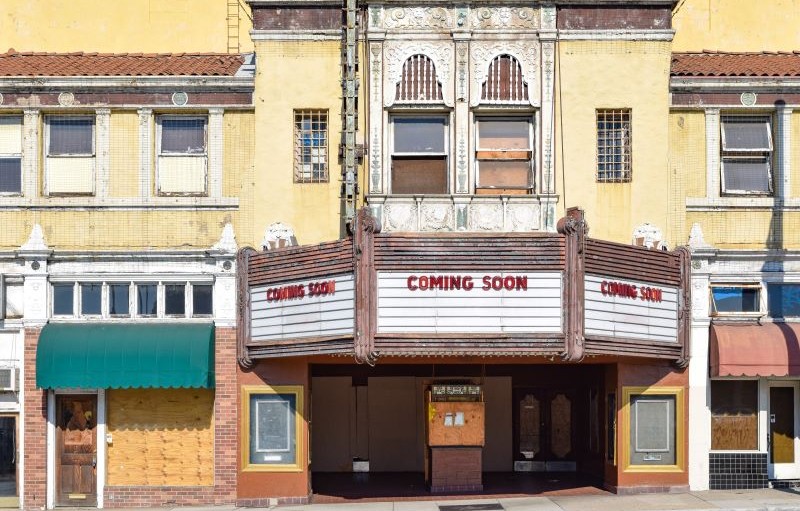
Walk around virtually any city in the United States, and it’s hard to miss the stark symbols of economic inequality. Restaurant workers unable to afford the food they cook and serve. Teachers and tradespeople priced out of the community in which they work. A family on the brink of poverty unable to afford treatment at the world-class hospital a mile away.
These scenes play out not just in large, expensive cities, but in small and mid-sized ones, too, including places that have worked tirelessly to jumpstart their economic engines. These persistent, almost vulgar disparities were enough to make Haegi Kwon, policy analyst at the Lincoln Institute of Land Policy, pursue a pointed research question: Is economic development, as a set of policies and practices that aims to produce community prosperity . . . actually working?
In a new working paper, Kwon argues that traditional economic development approaches—such as trying to attract outside employers with promised infrastructure or tax breaks (recall how cities bent over backwards trying to woo Amazon as it sought a second home)—often produce uneven growth that can deepen disadvantage and exacerbate longstanding inequities. “Just because there's overall economic growth at the city level, it doesn't mean those benefits trickle down,” Kwon says. “A lot of times you end up seeing increased disparities within cities.”
Evidence suggests that when a new tech company or other sought-after employer enters a community, for example, the benefits mostly flow toward homeowners and people who are highly educated. “But if you’re low-income and you’re a renter, then you’re probably going to experience some vulnerability, and at worst displacement,” Kwon says.
Historically, the goal of most local economic development programs has been to bring in more, says Jessie Grogan, director of equity and opportunity at the Lincoln Institute. “More jobs, more investment, more businesses—there’s a perception that you need to grow, you need more stuff, and that’s what economic development success looks like,” Grogan says. But as part of a research project supported by the Robert Wood Johnson Foundation, Grogan and Kwon are asking community leaders to challenge those long-held assumptions.
In her working paper, Kwon introduces a new three-part framework for thinking about economic development—one that targets resident health, equity, and wellbeing as the explicit goals of such investments, rather than just growth.
Looking In, Leveraging, and Locking
To gain a new perspective on economic development, Kwon explored existing theoretical frameworks such as the Asset-Based Community Development (ABCD) model and the slow-growth, locally resourced concept of “scaling deep” to achieve more durable success. Applying elements of these alternative perspectives, Kwon has proposed a three-step framework that represents a community-centered approach to economic development: looking in, leveraging, and locking.
“This framework emphasizes the importance of identifying and nurturing existing assets, collaborating to leverage these assets, and promoting greater community stability,” Kwon says.

Economic development practitioners should start by looking in, she says. That includes some inclusive and collective soul-searching to identify a community’s issues and shared priorities—but it also means recognizing assets already in place to help attain those goals. Every community has something of value on which it can build—some combination of natural, social, cultural, human, political, economic, or built resources.
Community assets might be historical or geographic advantages, such as a working waterfront, key railway, or abundant green space or city-owned lots. They could include institutions, such as a university or museum, or a patchwork of small nonprofits that have earned trust by developing deep roots in different parts of the city. And then there’s the often-overlooked value of the people and cultures that comprise a community—the local knowledge, lived wisdom, and diverse skill sets of the existing residents.
“There might be a lot of skill and talent in those communities that has just not been recognized,” Kwon says, such as informal businesses that could be formalized, or entrepreneurial immigrants whose contributions are often ignored or underutilized. “If you look deeper, there’s a lot of capital and skill that they’re bringing with them.”
Leveraging those assets means making the most of them by collaborating, sharing resources, and building off even modest advantages to create an impact greater than the sum of the inputs.
For example, bringing together nonprofit organizations and other institutions that have operated in competition with or in isolation from each other, and getting them to complement each other’s work—by sharing information, developing referral systems, and coordinating activities to avoid duplicative efforts—can help them achieve shared goals. Andrew Crosson, founder and chief executive of the regional social investment fund Invest Appalachia, calls this approach the “stone soup” of economic development, with organizations pooling their limited resources and building upon each other’s work.
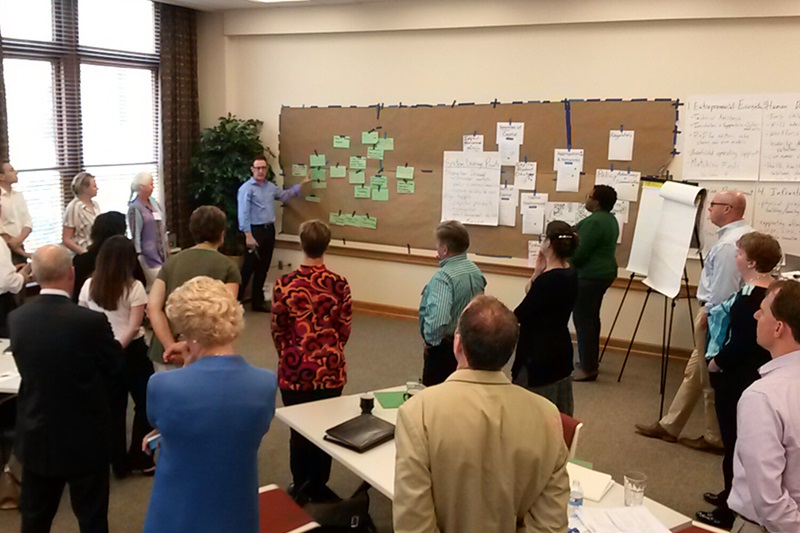
There’s one more crucial step to the puzzle, Kwon says, and that’s locking investments into place to ensure sustained stability and prosperity for the community.
“Locking is about creating virtuous cycles of growth,” Kwon says, often by investing in workforce training, wealth building, and entrepreneurship efforts. “Local business owners are more likely to reinvest, so the more you have businesses owned by people who live locally, the more likely you are to get this kind of reinvestment in the community.” She notes that shared ownership models such as community land trusts can also help secure continued stability and wellbeing as new investment flows into a community.
Appalachian Assets
Kwon’s framework isn’t just informed by existing research literature; a number of organizations nationwide have been putting similar steps into practice, with encouraging results.
Before launching Invest Appalachia, for example, Crosson and other members of the Appalachia Funders Network spent years conducting an “open-eyed analysis” of the region’s opportunities and gaps within a historical and economic context—looking in, if you will. They identified the region’s active network of nonprofits as a crucial asset. “We have the benefit of some networks of nonprofits that have been doing community economic development work for years, with really sharp, ground-truthed, multi-year track records,” Crosson says.
“They did a very seemingly homegrown exercise in getting everyone who touches the proverbial elephant together to say, ‘Okay, let’s work together. What do we want, and how can we think about developing shared priorities and then bringing in resources around those priorities in a more structured and intentional way?” Grogan says. “They got all the players organized and rowing in the same direction.”
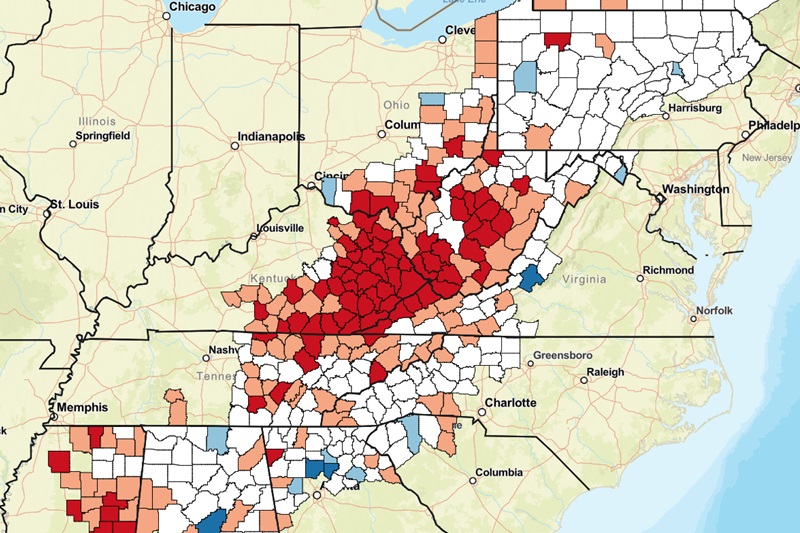
One of the most powerful ways Invest Appalachia has been able to leverage its modest grant dollars for greater impact, meanwhile, is through credit enhancements. These arrangements allow the fund to essentially absorb excess risk on behalf of low-wealth businesses, builders, and mission-driven lenders—borrowers who will pay back the money, but lack the collateral to qualify for traditional financing, or who need more flexible lending terms. It’s not entirely unlike having someone with financial stability cosign a car loan or apartment lease for someone else.
“You have to break the cycle of scarcity and disinvestment and lack of investment readiness,” Crosson says. “And I think the best tool that we have as a field is credit enhancements, and specifically grant-funded credit enhancements—like loan guarantees, loan loss reserves, conditional repayment loans, unsecured bridge loans, things like that—that can help to get money into a project to get the juices flowing. You’re giving people a chance to build assets.”
Every credit enhancement unlocks investment capital for projects and borrowers who couldn’t otherwise access it, Crosson says. “It allows community lenders and impact investors to put repayable dollars into things that are investment-worthy but not quite investment-ready.”
One simple and effective example, Crosson says, is providing uncollateralized bridge loans to nonprofits and small businesses that want to invest in rooftop solar. On-site solar generation is a win-win, improving climate resiliency while reducing operational expenses, and organizations can get up to 50 percent of the installation cost reimbursed through federal tax credits—but not until they file their taxes a year later. Invest Appalachia worked with the Appalachian Solar Finance Fund, a core partner in the clean energy sector, to identify this major bottleneck in solar development and develop a solution. By extending short-term bridge loans—which carry very little risk, since they’re essentially backed by the Internal Revenue Service—Invest Appalachia has helped provide nonprofits like the Just for Kids Advocacy Center and Howell’s Mill Summer Camp, both in West Virginia, with the upfront money they need to invest in solar.
The majority of those loans will be repaid and then reinvested, Crosson says, allowing grant money to go farther and last longer. “That money will come back, it will recycle, and we’ll get to use it again and again and again.” At the same time, the repayable nature of credit-enhanced loans helps lock in prosperity by setting projects on a path toward long-term sustainability and self-sufficiency.
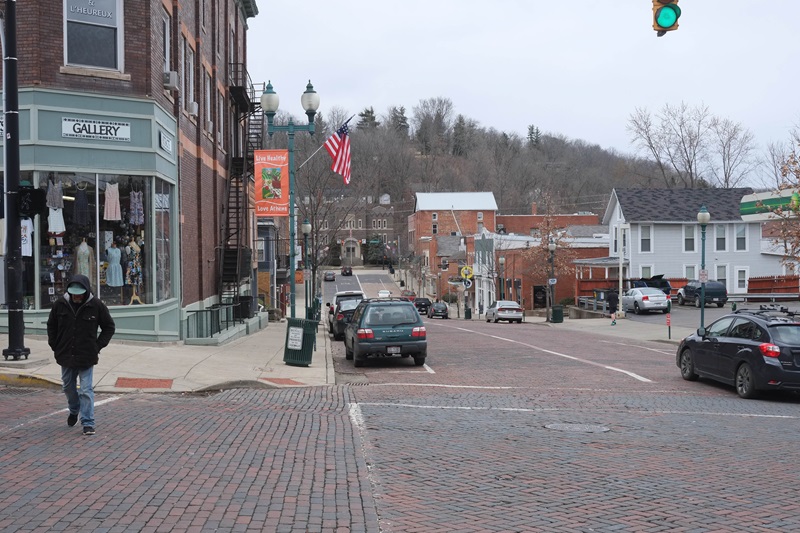
Locking in demands a systems-level approach, Crosson adds. “If we do individual transactions—one factory here, one housing development there, in the way that people think about economic development traditionally—that's just not going to add up, especially in a place with the socioeconomic characteristics of our region,” he says. Clustered investments, though, can yield compounding benefits.
“A few targeted interventions can generate the momentum needed to sort of catalyze an entire industry,” he says. “We also think about that in terms of geographies, where doing a cluster of deals, businesses, and projects allows that community to achieve some level of self-sustaining growth and inclusive growth that starts to spill over to the communities around it.”
Russell: A Place of Promise
While Invest Appalachia serves an entire region spanning multiple states, the same principles can be applied at the city or even neighborhood level.
In Louisville, Kentucky, for example, local government has been countering decades of disinvestment in the predominantly Black neighborhood of Russell with a focus on revitalization and staying out in front of displacement pressures. Recognizing the value of both the place itself and its people, a public-private initiative called Russell: A Place of Promise has been guiding that effort since 2018 with an uncommonly profound and prolonged commitment to the neighborhood’s crucial asset: its residents.
“Oftentimes, what you see in community development projects is a focus more on the built environment, rather than the actual people,” says Cassandra Webb, co-lead of Russell: A Place of Promise (RPOP) and director of the Place of Promise initiative at Cities United. And as new buildings, facades, trees, streetlights, and other overdue investments make a place more attractive, she says, “folks enjoy the resources and the goods and services that are there, but the people who call that neighborhood home can no longer afford to live there. So part of our strategy was, how do we make sure that folks are a part of building out what RPOP is going to be, and that they also have the opportunities—whether it’s workforce development, greater job opportunities, more sustainable housing—so they can afford to stay in their community?”
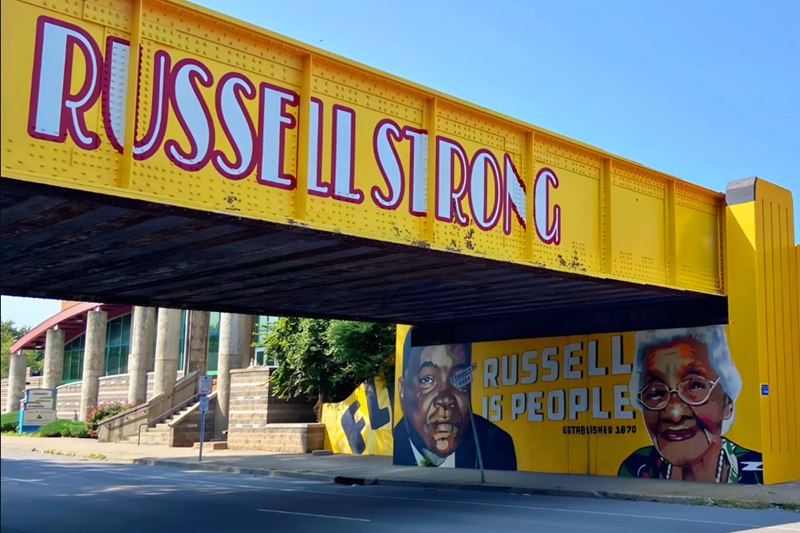
RPOP leaders have been listening to, learning from, and learning with neighborhood residents, not only through ongoing conversations, block party events, and leadership education sessions, but by taking residents on paid trips to explore examples of shared ownership in other cities. Webb accompanied a group of about 20 Russell residents on a trip to Atlanta, for example, where they met with peer organizations to learn firsthand about community land trusts.
“It's about investing in the people of the community,” Webb says, “and as we invest in them, and work in partnership with them, being able to gain insights that then help us inform our strategies on the place side.”
Investing in Russell’s residents has helped cultivate another important, hard-won asset: trust.
“The city is not necessarily seen as a trusted partner in historically Black neighborhoods, because the city has been a driver of a lot of the disparity,” says Theresa Zawacki, RPOP co-lead and policy executive on loan from Louisville Metro Government. “And even in present times, the city is seen as a source of state violence, a source of disparate impact, a source of unkept promises. . . . So there was a lot of relationship maintenance and trust-building at first.”
Those efforts got a boost in late 2019, when RPOP hired a resident named Jackie Floyd—known to many in the community as “the mayor of Russell”—as a full-time outreach member. The pandemic prompted some pivoting, but RPOP continued to engage and support residents through the lockdown, providing local families with care packages containing health and hygiene items, kids’ activities, and fresh food grown by a collective of Black farmers. A program called the Russell for Russell Residents Coalition coalesced online, and drew more than two dozen participants, aged 22 to 72, who helped shape a set of Black wealth creation strategies and craft the group’s Partnership Pledge. Since then, RPOP has graduated 62 residents through its small business accelerator, with one cohort specifically focused on childcare businesses, and built both single-family and income-generating duplex homes in partnership with a Black-led affordable housing developer, Rebound.
In further community workgroups, residents (who earned a stipend for participating) learned about and helped define the parameters of new neighborhood investments, from models of community ownership to universal basic income programs—including the YALift! guaranteed income pilot that RPOP helped create and implement in Louisville along with Metro United Way.

Russell: A Place of Promise also has a key place-based asset to leverage toward its mission of creating lasting Black wealth in the neighborhood. Louisville Metro Government has committed a five-acre plot of vacant land to the organization, sitting at the intersection of 30th and Madison streets—across from an athletic facility that draws tens of thousands of visitors annually.
As RPOP prepares to redevelop the property in its first major capital project, residents are deeply involved in charting the course. The goal is to create a mixed-use community focal point, defined by shared ownership, to act as both a catalyst for generational wealth and a bulwark against displacement.
RPOP and Russell residents have been exploring several different models of shared ownership, Zawacki says, including community land trusts and real estate investment trusts. But whatever form that eventually takes, the hope is that it will help lock in place a foundation for long-term stability and opportunity. “Where we’ve landed at this point is that residents are interested in the idea of having some amount of financial ownership in 30th and Madison Street, but it doesn't necessarily need to be something that pays dividends,” Zawacki says. “It could be something that allows for the profit that comes off of that property, after it stabilizes, to be something that they direct in an investment back into the neighborhood.”
Residents also see the opportunity to own a business at the 30th and Madison Street complex as its own form of community ownership. “We’re actually having conversations with seven- and eight-year-olds, about how one day, when the site is built, when you’re 15 or 16 years old, your business that you’re thinking about could actually be at 30th and Madison,” Webb says.
Prioritizing Well-Being
Both Invest Appalachia and Russell: A Place of Promise are explicitly prioritizing resident well-being and working toward that goal with a promising mix of strategies, Kwon says. And while many of those initiatives are fairly new or works in progress, she’s excited to see the impacts they’ll have on their communities in years to come.
“We’re not saying that everything’s going to be rainbows and unicorns, but Russell, for example, is really looking at cooperative structures, clear ways of trying to ensure that at the city level, you have dedicated, permanently affordable housing,” she says. “They’re not just looking at bringing in a chain supermarket—they’re looking at, how do we build wealth within the community? How do we ensure affordable housing so people can stay, and also ensure a sort of cultural stability as well?”
Indeed, stability may be just as important to a community as economic growth. “The way I’m starting to think about it is that ideal places are stable across generations,” Grogan says. “You have enough opportunities that your kids want to stay here, but you’re not so unaffordable that your kids can’t stay here.”

And stability isn’t purely an economic matter, either; it’s also about autonomy. So as RPOP prepares to incorporate itself as a standalone nonprofit this year, its outgoing co-leads are making sure the board is composed mostly, if not entirely, of neighborhood residents and small business owners. “Our board members that we have now, four are Russell residents that have been along with us over the past few years, that have gone on those trips with us,” Webb says, “and now are very comfortable and knowledgeable about how we move this work forward.”
Crosson says one of the key, and hopefully lasting, aspects of Invest Appalachia’s work has been increasing capacity in the region—not just the capacity for technical expertise or securing funding, but the ability to put it to use in service of the community’s agreed-upon goals. “One of our partners uses the analogy of watering the soil,” he says. “If there’s a drought, and you pour water on the soil, it runs off, right? And if a region is disinvested and under-resourced, you can’t just throw money at it and hope that’s going to solve everything.”
Zawacki credits Louisville Metro Government for supporting Russell: A Place of Promise with a steady palm rather than a strong fist. The city doesn’t hold their grant money or dictate how they use it, and has provided land that the organization would have struggled to purchase at market rates. “That opportunity to be entrepreneurial with the resources of government, but without the direction and control of government, has been essential to our success,” Zawacki says. “That is definitely one of the takeaways from the last five years of the work: having the resources is great, but having the freedom is even greater.”
Jon Gorey is a staff writer at the Lincoln Institute of Land Policy.
Lead image: A shuttered movie theater in southern California. Credit: Michael Warren via iStock/Getty Images Plus.